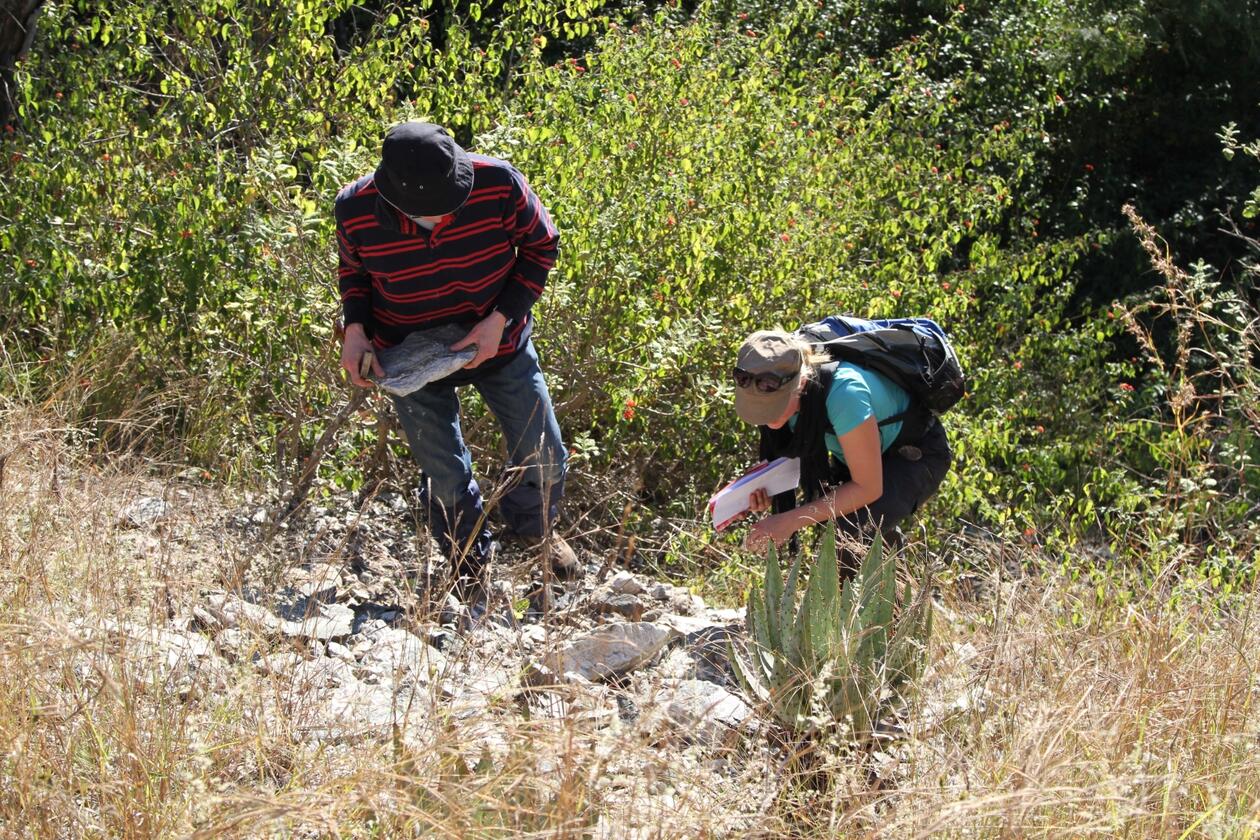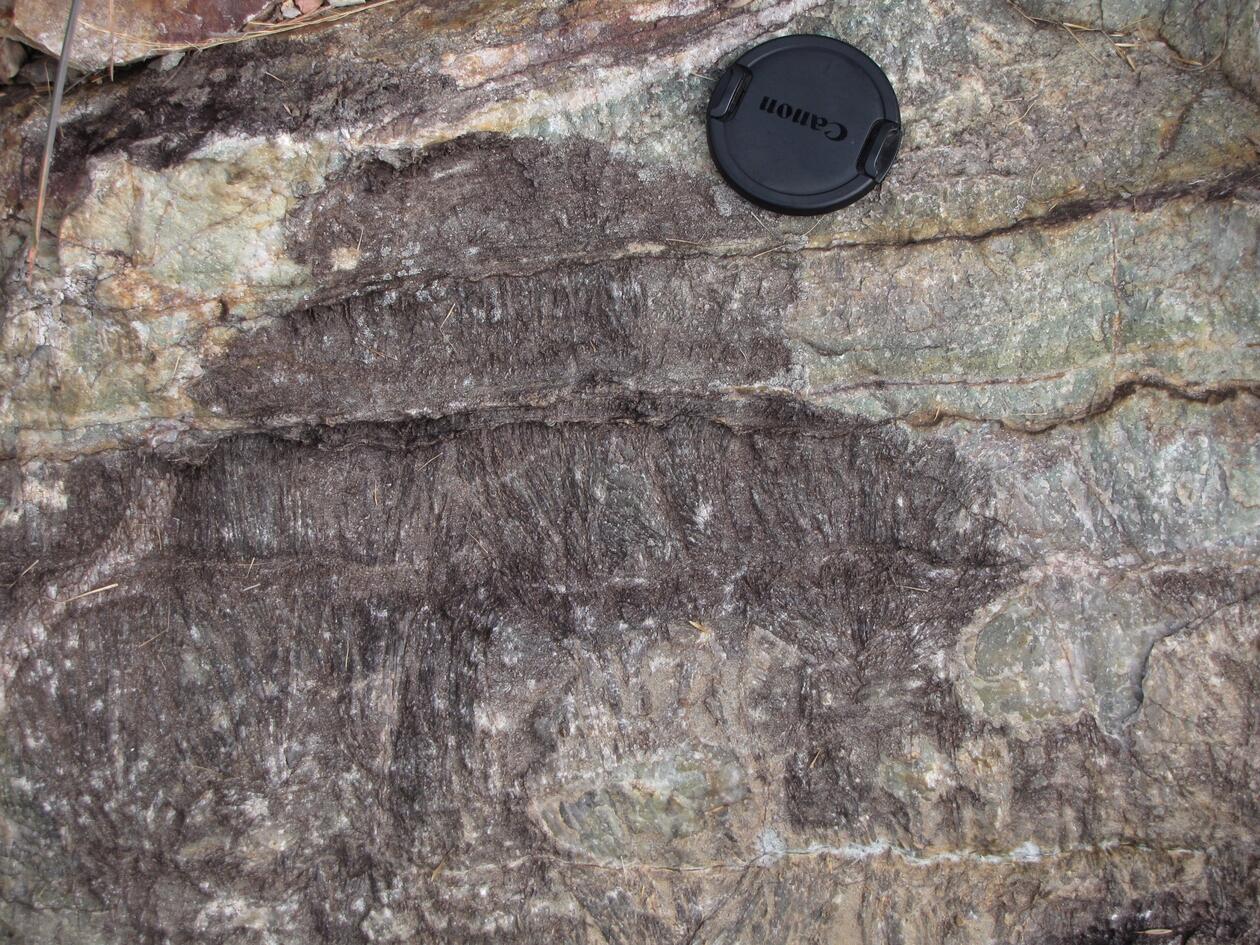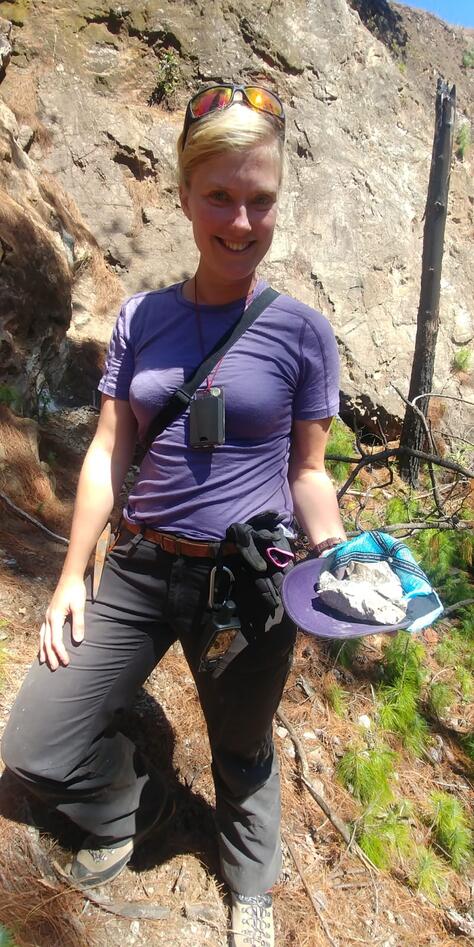New publication in Nature Geoscience
When did Earth change from a water world into a planet with continents rising above sea level? Together with researchers from The Netherlands and Germany, associate professor Desiree Roerdink from the Department of Earth Science and Centre for Deep Sea Research has found that land appeared very early in Earth’s history – up to one billion years earlier than we previously thought.

Main content
When did Earth change from a water world into a planet with continents rising above sea level? Together with researchers from The Netherlands and Germany, associate professor Desiree Roerdink from the Department of Earth Science and Centre for Deep Sea Research has found that land appeared very early in Earth’s history – up to one billion years earlier than we previously thought.
The team tackled the long-standing question using chemical fingerprints (isotopes) of the element strontium in barite minerals that formed from seawater more than 3 billion years ago. Rocks in the continental crust are chemically different from those in the oceanic crust, and therefore have a different strontium fingerprint. When weathering takes place on land, this fingerprint is transported via rivers to the oceans where it can be recorded by minerals like barite. When Desiree and her colleagues analyzed ancient barite from South Africa, Australia and India, they found such continental strontium isotope signatures in all their samples. Based on this work, land must have been present as early as 3.7 billion years ago – only 800 million years after the formation of the Earth. As weathering washes essential nutrients out of rocks, the appearance of this early land may well have impacted the evolution of microbial life on our planet.
The work appears on Thursday in the leading journal Nature Geoscience and is a collaboration between the University of Bergen (Desiree Roerdink, Yuval Ronen), Utrecht University (Paul Mason) and the University of Münster (Harald Strauss).
Article: Desiree L. Roerdink, Yuval Ronen, Harald Strauss and Paul R. D. Mason, 'Emergence of felsic crust and subaerial weathering recorded in Palaeoarchaean barite', Nature Geoscience https://www.nature.com/articles/s41561-022-00902-9





